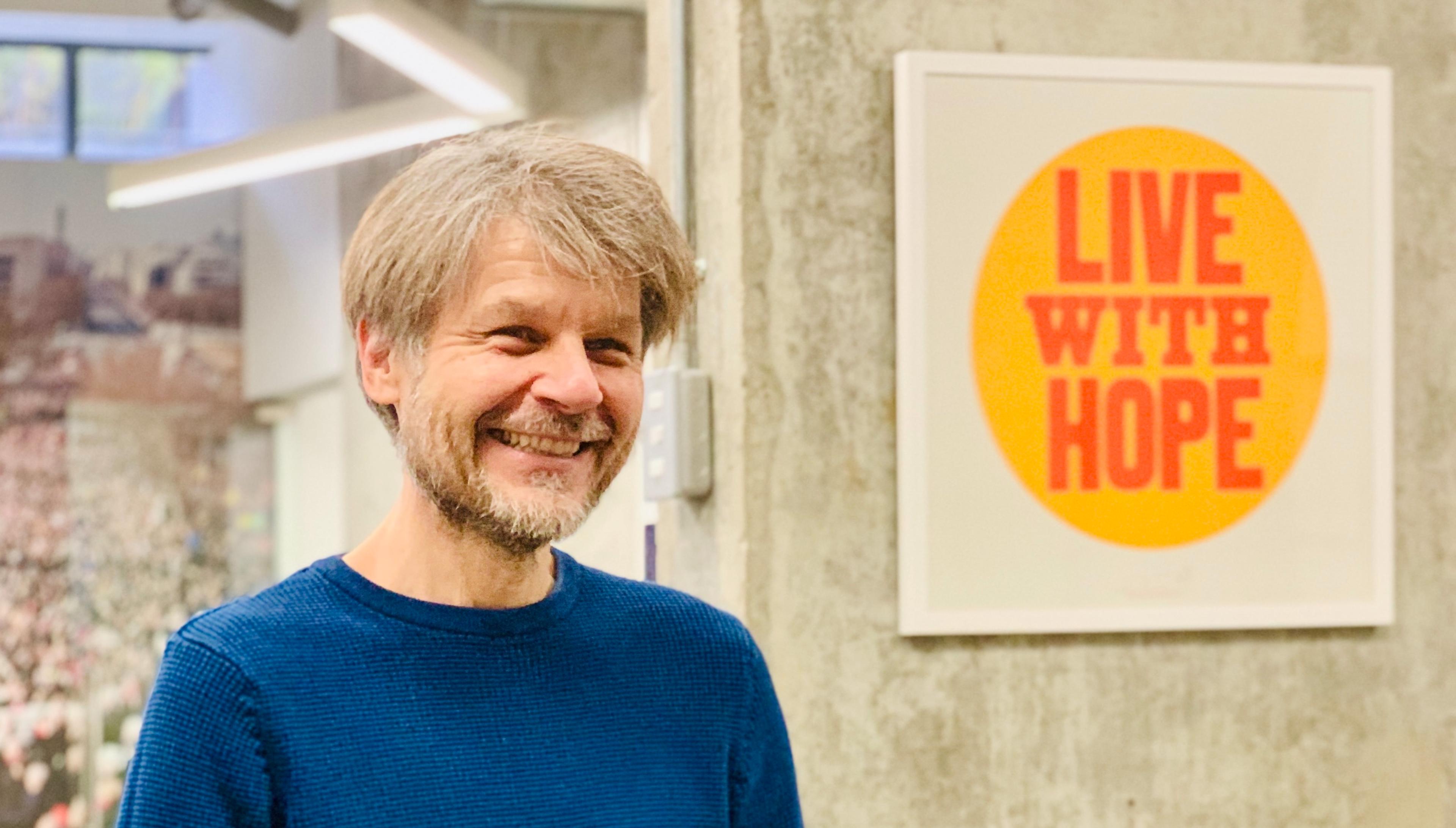This profile is part of the "People of Giving What We Can" series.

We recently spoke with member Rick Holland from London, UK. He shared with us how he discovered Giving What We Can Pledge, why it's helpful to formalise a commitment, talking about giving, and why it's important to keep donors in the loop.
Discovering Giving What We Can
I attended the EA Global conference in London, where I first discovered what Giving What We Can was about.
The more I got involved with animal welfare organisations, the more I could see the alignment between them and what the effective altruism movement was doing.
Being motivated by effectiveness and emotion
One of the things I like about the EA movement is that there's so much focus on finding the most effective organisations (who've proven that they can have the most impact in lives saved or animal life saved or whatever it might be).
I haven't found it yet, but I'm trying to find the sweet spot between all of that data and all of the emotion and figuring out how we combine all that. Finding the middle where people are not only giving what they can but giving as much as they can, rather than as little as they can.
Talking about giving
But to get there, I think we need to have those conversations. I think there's an embarrassment thing as well. Sometimes people are embarrassed that they've supported or partnered with an organisation to make great work happen, whereas I think that's something that we need to celebrate. There is this weird relationship with money. So people are spending money, but when it comes to spending it on good, effective work, we clam up. Then we don't talk about it. How do we change that?
And I think that's part of what Giving What We Can is doing: it is making that change happen.
Formalising a commitment to helping others
There are a lot of people who are supporting great nonprofits, organisations, and initiatives. They're already doing it, but they haven't thought about formalising that kind of commitment. So I think it's beneficial on a lot of different levels and that it's encouraging people who are already giving to make that commitment, but also for people who want to make a difference but aren't sure where to start or what's appropriate. The Giving What We Can Pledge is a fantastic benchmark for people to look at.
One of the things that really impressed me about Giving What We Can is that you're encouraging the conversations with supporters, with donors, with partners, not only to give but also to make that a commitment. I think that's something that we need to have more of.
When you make that decision to give to an organisation, how do you choose which ones to give to? How do you choose how much to give? It's great that you can look at the Giving What We Can website and get a sense of "Wow, these are organisations that are on board or these are people that are on board with this idea". It creates a goal for some people, or an aspiration: but it's normalising giving at this level.
Having conversations around giving
Whether people are high net worth individuals or just doing what they can to get through the lockdown, there's not usually a threshold or a target for what's an appropriate amount to give. In general, we're not having those conversations. So when we discover an organisation like Giving What We Can has created a threshold and encourages people to make that pledge, it's good on many levels.
Keeping donors and partners in the loop
For a lot of the nonprofits that I've worked with in my career, the only time donors hear from them is when they want money, when there's an ask happening. Yet there's so much potential to engage with donors and partners to say:
- "I just want to give you an update on what we're doing"; or
- "You know that a hundred thousand pounds you gave us, this is how we've spent it"; or
- "When you made an unrestricted gift, you gave us the flexibility to do X, Y, Z -- and here's what we've done".
So there are all these great opportunities to have those conversations that might be around money, might be around the gift or partnership, but it's not necessarily around: "Yeah, I'm calling because we've spent the hundred thousand pounds you gave and now it's run out."
When you're keeping donors and partners engaged you don't need to fear picking up the phone because they know what's happening and will be excited about making the next gift. So how do we make more of that happen, but also take away the embarrassment around or the reticence that people have around: "Okay. I've made a gift, but I don't want to tell anyone about it. I don't want my friends to feel bad or anyone to feel bad that I've made it, that I was able to make a gift of this amount."
Let's turn that around that's going to spur even more giving. Let's make those kinds of conversations happen.
A tight knit effective giving community
With GWWC, CEA and the broader EA community everyone seems to be interconnected. It's quite a small, relatively tight knit community. The success that organisations like GWWC have will spill over and affect other organisations. For example, if Animal Charity Evaluators (ACE) is doing well, then animal welfare and animal protection organisations will do well. Then that's going to spread to AI, or poverty relief, or global catastrophes, or pandemics for that matter: all of this stuff is interrelated.